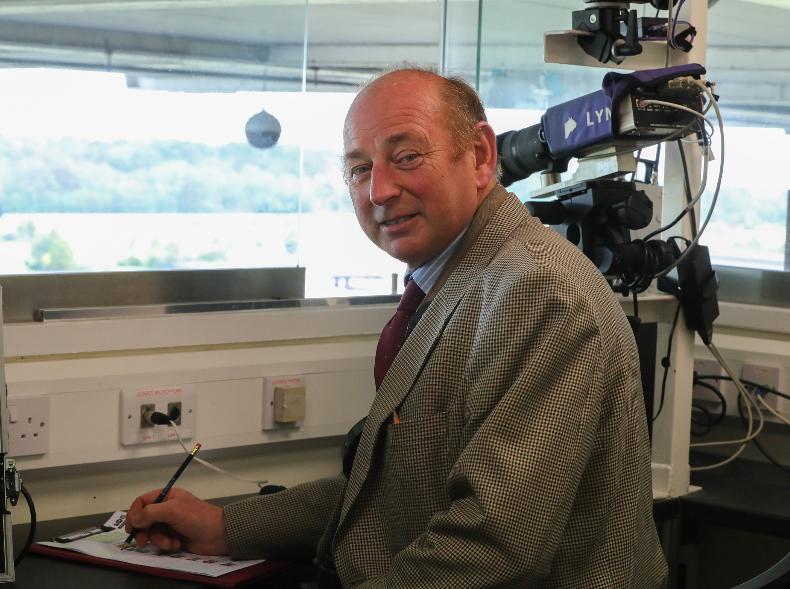NEXT May Andrew McKeever will have completed 30 years as a judge with the Turf Club and Irish Horseracing Regulatory Board.
“When I started we were dealing with clockwork cameras and negatives,” he says. “Technology has come a long way and we have tip-top world-leading equipment. The problem now is that we are so exact we can confidently call results which some observers may find hard to accept.”
There is more to the job than just calling the numbers after they pass the lollipop stick. Andrew takes us through his typical day. “Before racing I get the non-runners and other important information from the assistant clerk of the scales. It’s very important you can identify all the runners, so I learn off all the colours as sometimes the number cloths can be mud-splattered and illegible.
“On my large racecard I will identify the grey horses, the headgear, and I will go into the parade ring and mark down any distinguishing features, like a white blaze on the nose. In the event of a tight finish the more you know about the horses the better. You are building in as many counter-checks as you possibly can.”
While Andrew’s dedication to detail is admirable, one suspects that these duties and routines he carries out are a force of habit, dating back to times when photo-finish cameras were less reliable than they are now.
“Then I go up to the box and watch the start. The primary function of the camera operators is to provide the photo-finish for the judge but they also record all the finishers, times and distances, which are sent to HRI for the formbook. I assist them by telling them what fell or pulled up.
“As the race is coming to its conclusion, I write down the numbers of the principals on my card and we carry out a preliminary instant check with the camera before we call the result. If there is any doubt, be it for first place or fourth, we call a photo for that position and go through the image closely.
“We check each number cloth against the colours of the rider, to ensure everything is right. If it’s very tight then your notes on the horses’ markings or tack can help. I have seen mistakes made, mostly in other jurisdsictions, where the judge has assigned the wrong head to the wrong horse.”
The white lines are laid on the computer image to assist the judge in calling the winner, or indeed a black line if one of the horses has a white nose.
Reverse camera
Eight racecourses now have a reverse camera, rather than a mirror, in place on the far side of the track, which is synchronised with the ‘main’ camera. “This has been a big advancement,” Andrew says, “and it is why there is rarely a dead-heat given.”
He says it also helps if the camera is high up in the grandstand. “The higher the better as you get a great view down on the horses. We struggled with a low position at Navan for many years until they built a box on the roof.”
He says there is some pressure to get the result out as soon as possible but the new technology has made that simpler. “Years ago you had to wait for the print to be developed and that could drag on for a while. I have trained up most of the current judges and I tell them ‘It’s a wonderful job but you have to be right all the time.’
“In some countries there is a certain machismo attached to calling the result as quickly as possible but it is really vital the result is correct.”
When he began judging in 1991 “we were literally working out of chicken houses”, says Andrew. “In those days you needed a dark room to develop the film and I can remember, in Galway, camera assistants using chewed-up paper to plug holes in the wood where light was streaming in.
Determining the result could take 10 or 20 minutes back then. “Sometimes you wouldn’t be able to leave the box because the next race was starting soon.”
He is grateful for the funding that has been put into the integrity services and says the results justify the investment. “The speed and precision we have now is fantastic. We have a good team and I think our record stands up to scrutiny. Very few errors occur.
“We should, of course, acknowledge the work done by judges of the past, such as Percy Banahan and Frank Hyland. They were great men and their job was very difficult at times.”


 This is a subscriber-only article
This is a subscriber-only article
 It looks like you're browsing in private mode
It looks like you're browsing in private mode





SHARING OPTIONS: